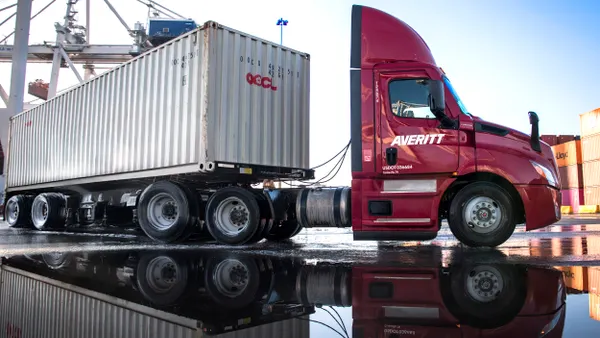Dive Brief:
- U.S. manufacturing reached "the bottom of the toboggan run" in April and began to rebound in May, Timothy R. Fiore, chair of the Institute for Supply Management Manufacturing Business Survey Committee, told reporters on a call Monday. The May PMI reading came in at 43.1%, an improvement over April's 41.5% figure. However, the sector is still struggling, as a PMI below 50% indicates contraction (a figure above 50% signals expansion).
- As supply issues slowly resolve, demand issues persist. ISM's New Orders Index came in at 31.8% in May, its second-lowest level since December 2008 when it registered 25.9%. Manufacturers' performance in June and July will be critical indicators of the industry's recovery path for the rest of the year, Fiore said, however ISM does not expect to see a PMI in a growth range until the end of 2020 or in 2021.
- Even for businesses that do manage to get back up and running soon, the steep drop-off in global consumer demand poses a challenge. "The mass new export orders to Europe or China were very weak," Fiore said. "The customer inventory, I think, is declining into a better level, but it's probably not doing that for the right reasons. It's probably doing that because customers are managing their cash better," while preparing for a broader economic downturn.
Dive Insight:
As recently as January, experts warned that the U.S.-China trade war and associated economic losses could spark a recession at the end of 2020 or in 2021. Now that the coronavirus pandemic has taken hold of the global economy, leading the International Monetary Fund to warn of a depression it's calling the Great Lockdown, Fiore said trade war concerns have been largely eclipsed by the disruption the outbreak has caused.
This is due to the fact that "the virus issue is a disruption of supply and, as a result of the layoffs of millions of people around the world, a loss of demand," he said.
During the trade war, and ever since, companies Fiore surveys have been diversifying their sourcing in Asia and/or nearshoring. While this has helped smooth out supply shocks going into the summer, the difficulties of restarting domestic operations and managing inventory present an uphill battle for the industry going forward, he said.
"What is the true capacity in these factories to produce, given that they have to keep people apart from each other?" he said. "Everybody has plans for that, but nobody really knows ... and there's no way your current footprint will get you back up to a Q4 2019 level."

On the inventory side, the Logistics Manager Index in May showed warehouses filling up with excess inventory, a trend ISM noted as well.
"It's not because [shippers are] stocking up for future demand. It is because they're taking whatever they can get, and they're not able to convert it all into usable product, because they're missing parts," Fiore said. "So, I don't see the raw material inventory count growing as a positive thing. It's all a function of disruption."
While lead times, which were 200% longer than average in mid-April, have come down to more normal levels, Chinese manufacturers are struggling to get back up to speed shipping products to the U.S., Fiore told Supply Chain Dive
And for the products that do make it to U.S. shores on time, shippers are still struggling to get all the parts they need to their respective facilities because of transportation delays, particularly due to challenges in the trucking industry, he said.
Shippers are seeing slowdowns in their network as trucking companies contend with shifting demand patterns or go out of business entirely, Fiore said.













